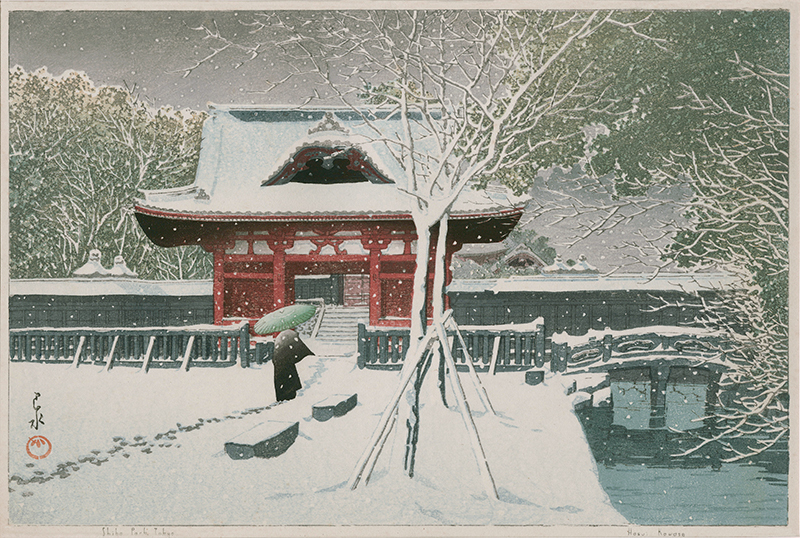
19th, 20th & 21st Century Fine Prints
707-546-7352 · fax 707-546-7924 · web: www.annexgalleries.com · email: artannex@aol.com
Shiba Park, Tokyo, (January, from the Calendar for the Pacific Transport Lines, 1953) by Kawase Hasui

Shiba Park, Tokyo, (January, from the Calendar for the Pacific Transport Lines, 1953)
Kawase Hasui
Shiba Park, Tokyo, (January, from the Calendar for the Pacific Transport Lines, 1953)
Kawase Hasui
1883 - 1957 (biography)This image is a 1952 color woodcut, reprised from a design from 1936 to illustrate the month of January, 1953, in a series of woodcuts created for the privately commissioned calendar. There is a long tradition in Japan of giving gifts, with gifts given not only for social occasions, but also for social obligations -- gifts given when indebted to others, both family and business. The emphasis is on the act of giving rather than the gift itself. The value of the gift is of less importance than the presentation and thoughtfulness in which it is presented.
https://www.annexgalleries.com/inventory/artist/974/Hasui/Kawase
Quoted from the Hotei/Hasui catalogue raisonné, page 131: "Narazaki explains that 500 examples of this calendar were commissioned by the Pacific transport lines for distribution in the United States and that it was created within the time-honored tradition of meisho-e (pictures of famous views)."
He adds that "while Hasui did not ordinarily undertake this type of work, the artist seems to have become quite engrossed in this project in an effort to convey a sense of the quintessential Japanese landscape." and "Both the publisher Watanabe Shozaburo and Hasui attached importance to the fact that these compositions were intended as souvenirs for foreigners."
The title and the artist's signature are printed in English in the margin. This impression is still attached at the top to the original card from the calendar.
